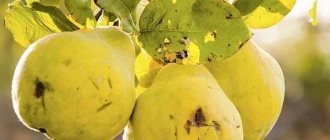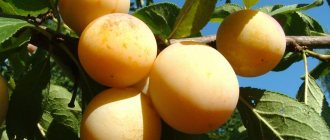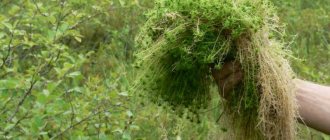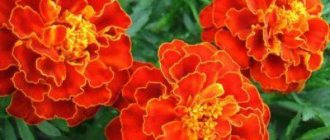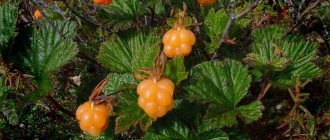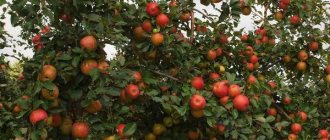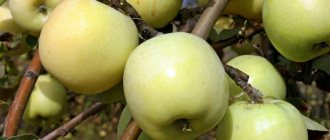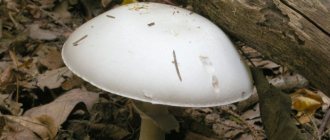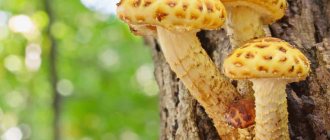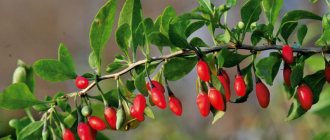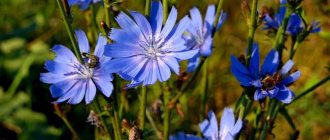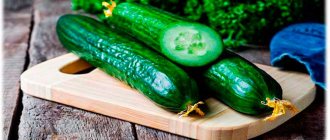| Latin name: | Tuber |
| English name: | To be confirmed |
| Domain: | Eukaryotes |
| Kingdom: | Mushrooms |
| Department: | Ascomycetes |
| Class: | Pecizomycetes |
| Order: | Petsitsevye |
| Family: | Truffles |
| Genus: | Truffle |
| Edibility | Edible mushroom |
- 7.1 Deer truffle (Elaphomyces granulatus)
Characteristics of truffle mushroom
— Advertising —
The truffle's fruiting body is located underground, it has a round or tuberous shape and a fleshy or gristly consistency. The size is variable, from the size of a hazelnut to a potato tuber. On top of the fruiting body there is a leathery layer, smooth, cracking or covered with warts. When cut, the tissue of the fruiting body has a marble pattern, in which light and dark veins alternate.
Application in medicine
Truffles are not used in official medicine; their properties have not been sufficiently studied. But herbalists and traditional healers in many countries are confident that the drug from this mushroom helps improve vision and can be used to prevent eye diseases, and its pulp relieves gout pain.
Since truffles contain significant amounts of natural antioxidants, healers believe that they are beneficial and are indicated for strengthening the body of children, pregnant and lactating women, and for men to increase male strength. In addition, truffles contain pheromones, which can improve a person’s psycho-emotional state, as well as anandamide, a psychotropic whose properties are similar to marijuana.
Edibility of truffle
— Advertising —
True truffles are edible mushrooms. The most valuable types are the Perigord, Piedmont and winter truffles. Their pulp has a mushroom flavor with a hint of roasted seeds or walnuts and a strong characteristic aroma. After soaking in water, the truffle acquires the taste of soy sauce. Truffles are often added raw to dishes at the very end of cooking in order to preserve the aroma of these mushrooms.
Recipes and cooking features
Since truffle is a very expensive mushroom, and dishes made from it have a special taste, the rules for preparing the product are important:
- White truffle should absolutely not be subjected to heat treatment, otherwise it will lose its taste and aroma.
- Mushrooms are soaked in water to create a base for flavorful sauces.
- Store only when dry, wrapped in a paper towel, in the refrigerator for no longer than two weeks.
Truffle as a decoration for a dish
There are many recipes for preparing this incredible product.
Creamy soup with truffles:
- turkey fillet – 120 g;
- water – 240 ml;
- onion – 32 g;
- celery root – 80 g;
- ground black pepper and salt - to taste;
- butter – 20 g;
- cream – 60 ml;
- truffles – 16 g;
- bun – 28 g;
- olive oil – 4 ml.
Soup with truffles
Boil turkey fillet in salted water, cool and cut into cubes. Finely chop the onion and celery and fry in butter for 20 minutes. Combine the fried ingredients with turkey broth and bun and simmer for 15 minutes. Add meat and beat with a blender. Add cream and bring to a boil. Then combine with pre-chopped truffles. Before serving, drizzle with olive oil.
Pasta with truffles:
- pasta – 150 g;
- butter – 25 g;
- cream – 100 ml;
- parmesan – 100 g;
- truffles – 20 g;
- salt and ground black pepper - to taste.
Pasta with truffles
Boil the pasta, grate the parmesan. Melt the butter and pour the cream into it, add half a portion of Parmesan. Mix everything and keep on low heat for 5 minutes, add salt and pepper. Combine the pasta with the sauce, sprinkle Parmesan on top and lay out the chopped truffle pieces. Serve immediately.
Types of truffle mushroom
Summer truffle (Tuber aestivum)
The fruiting body is underground, tuberous or round, 2.5-10 cm in diameter. The surface is brown-black or bluish-black, covered with black warts. The pulp of the young mushroom is dense, becomes loose over time, the color changes from whitish to brown-yellow and gray-brown, light veins form a marble pattern. The taste is nutty, sweetish, the aroma is pleasant and strong.
It is found in mixed and deciduous forests, on calcareous soils, under oaks, beeches, hornbeams, birches, in Central Europe, in Russia. The fruiting season begins in summer and continues until early autumn.
Winter truffle (Tuber brumale)
The fruiting body is irregularly spherical to almost round in shape, 8-15 cm in diameter. The weight of an adult mushroom is 1-1.5 kg. The surface is covered with warts, 2-3 mm in size. The color of a young mushroom is reddish-violet, turning black with age. The pulp is initially white, then becomes gray or gray-violet with white and yellowish-brown marbled veins. It has a strong and pleasant smell, reminiscent of musk.
Grows in France, Italy, Switzerland, Ukraine. Ripens from November to February-March.
Italian truffle (Tuber magnatum)
The fruiting body is underground, has the shape of irregular tubers measuring 2-12 cm and weighing 30-300 g. The surface is uneven, velvety, light ocher or brownish, the skin is not separated from the pulp. The pulp is dense, whitish or yellow-gray, sometimes reddish, with a white and creamy-brown marbled pattern. The taste is pleasant, the smell is spicy, similar to cheese with garlic.
Mycorrhiza-forming with oak, willow and poplar, linden. It is found in deciduous forests in northwestern Italy (Piedmont) and France. The white Piedmontese truffle harvest lasts from September 21 to January 31.
Black or Perigord truffle (Tuber melanosporum)
The fruiting body is underground, tuberous, round or irregular in shape, 3-9 cm in diameter. The surface is reddish-brown, in old mushrooms it is coal-black, and becomes rusty when pressed. The pulp is hard, light, gray or pinkish-brown in color with a white or reddish marble pattern; in older mushrooms it is dark. It has a strong characteristic aroma and a pleasant taste with a slight bitterness.
Grows in deciduous forests, on calcareous soil, most often under oak trees. Distributed in France, Italy and Spain. The season lasts from November to March.
Rules and collection times
When collecting mushrooms, it is important not only to remove ripe specimens, but also not to damage the tubers and roots of the plants where they live. Since this mushroom is quite difficult to find, unusual harvesting methods have been invented.
The use of pigs and dogs in this process has become indispensable, since their sense of smell is much better than that of humans and trained animals quickly and efficiently help search for mushrooms.
Truffle picking
For this purpose, only a specially trained animal is suitable, one that will listen to the owner and move away from the prey in time. People who engage in such “hunting” are called trifulau; they try to pass on the craft to their children, along with knowledge about the places where mushrooms grow.
Good days for collecting the delicacy are determined by the phases of the moon and the ripening period of a particular variety. Below is a table of ripening varieties by month.
| Truffle variety | Harvest months |
| White truffle (Piedmontese) | October-end of December |
| Black Perigord | December-March |
| Summer black | Aug. Sept |
| Burgundian | September-December |
Poisonous and inedible types of truffle mushroom
Deer truffle (Elaphomyces granulatus)
A mushroom inedible for humans.
The fruit body is round in shape, 1-4 cm in size, yellow-brown in color. The smell is pungent, earthy, similar to the smell of potatoes. The surface is finely tuberculate.
Found in Europe and North America, Chile, China, Japan and Taiwan. It grows under coniferous trees, as well as under chestnuts, beeches and oaks, in all seasons, en masse in late summer and autumn.
Where do truffles grow and how to collect them?
Truffles are not easy to find in the forest; they hide well underground. Summer mushrooms are harvested in summer and autumn, peaking in August - September. They go for winter species in February and search for them until March.
The mushroom grows in deciduous and mixed European forests, less often in coniferous ones, as well as on the African continent (in its northern part), Asia and America. It needs moderately moist clay-calcareous soils with poorly developed grass cover, on which it forms mycorrhizae with the roots of different tree species. Usually truffles grow in small groups of 7 pieces.
Experienced truffle “hunters” notice hidden mushrooms by minor external signs - raised soil and dried grass. In France, it is customary to look for them using truffle flies, which lay larvae in the ground near this mushroom. The flight of these insects and their large concentration indicate the close location of truffles.
But not everyone is such a “tracker”, so to search for the delicacy, trained animals have been used since ancient times, which are able to smell the peculiar smell of truffles 20 meters away. Sows are the best at finding mushrooms, however, they get tired very quickly and the “quiet” hunt ends before begin. In Italy, dogs are used for searches; poodles and mongrels have become the best search engines. Interestingly, trained bears searched for truffles near Moscow until the 1869s.
Growing truffles at home
Oak or common hazel seedlings are used as a substrate for growing truffles. The seedlings are kept in sterile conditions for several weeks to allow the mycelium to take root. After this, the seedlings are planted in the nursery.
The soil for growing truffles should have a pH of 7.5-7.9 and a high content of humus and calcium. It should not contain stones, weeds and should not be contaminated with other types of mushrooms. Before planting, deep mechanical processing is carried out. The soil is not fertilized before planting. The environment should be dry, with an average temperature of 16.5-22°C.
Seedlings are planted in the spring. No more than 500 trees per hectare. Pour a little water into the hole, cover the seedling tightly and water it again. The planting depth is 75 cm. A top layer of forest soil with fallen leaves and plastic film are placed near each seedling.
The edible part of the truffle is the fruiting body containing the spores. The fruiting bodies are located at a depth of about 20 cm. They are dug out with small shovels. An indicator of the presence of a truffle harvest is the so-called truffle flies.
Useful properties and restrictions on use
Regardless of what flavor truffle has, its benefits to human health are undeniable. The presence of vitamin B1 helps improve immunity and helps cure gastrointestinal disorders. Due to its low calorie content, this product is also recommended for overweight people.
Interesting!
The presence of such a useful element as riboflavin helps to get rid of skin diseases; it is also useful for disorders of the nervous system.
Truffle contains a number of micro- and macroelements in its composition, such as:
- sodium;
- potassium;
- phosphorus;
- iron;
- calcium;
- manganese;
- copper.
Since ancient times, this mushroom has been used as an aphrodisiac: its subtle smell actually affects the areas of the brain responsible for attraction to the opposite sex and passion. There are no restrictions on the use of this product; it does not cause allergic reactions.
Interesting facts about the mushroom
- The maximum weight of a truffle reaches 1 kg, although there are also very tiny specimens the size of a pea.
- According to one hypothesis, mature truffles contain anandamide, a psychotropic substance that is similar in effect to marijuana.
- In France and Italy, since the 15th century, it has been common to search for truffles growing in the forest with the help of search dogs and pigs, which can smell truffles underground at a distance of up to 20 m.
- In the 19th century, truffles began to be cultivated; at that time, up to 1000 tons of these mushrooms were collected. In recent years, the truffle harvest has been about 50 tons. Mushrooms are grown in the USA, Spain, Sweden, New Zealand, Australia and the UK. And at the beginning of the 21st century, China became a major producer of truffles in the world. The Chinese variety is cheaper, but its quality is lower.
Why is it so valued?
Mushrooms contain many useful elements:
- antioxidants;
- vegetable proteins;
- pheromones;
- vitamins;
- alimentary fiber.
Substances that make up the product have therapeutic and preventive properties:
- Vitamin C strengthens the immune system, prevents the development of colon cancer and ensures complete absorption of iron and calcium;
- vitamin PP takes part in metabolic processes, regulates the level of bad cholesterol in the blood and prevents the occurrence of cardiovascular diseases;
- nicotinic acid increases the amount of estrogen and testosterone in the body, and also improves skin condition.
Mauro Maccarone from Rome's Campus Bio-Medico University found that truffle contains anandamide, a substance that has effects on the nervous system similar to marijuana.
Black truffle
What is unique about the food composition?
Truffle is a low-calorie product and if not for its exclusivity, it could become the basis of a fasting diet for many people losing weight. Its calorie content per 100 g is 24 kcal.
| The nutritional value | Quantity, g |
| Squirrels | 3,0 |
| Fats | 0,5 |
| Carbohydrates | 2,0 |
| Cellulose | 1,0 |
| Ash | 1,0 |
| Water | 90,0 |
Unlike ordinary mushrooms, the pulp of the “white diamond” is more easily absorbed by the body, restores the intestinal microflora and normalizes the acidity of the stomach.
| Chemical composition (per 100 g of product) | Amount, mg |
| Thiamine (vitamin B1) | 0,02 |
| Riboflavin (vitamin B2) | 0,4 |
| Nicotinic acid (vitamin B3) | 9,0 |
| Ascorbic acid (vitamin C) | 6,0 |
There are no restrictions on the intake of the mushroom, and elite restaurants serve dishes that contain no more than 10 g of the product.
Winter truffle (Tuber brumale)
The fruiting body is irregularly spherical to almost round in shape, 8-15 cm in diameter. The weight of an adult mushroom is 1-1.5 kg. The surface is covered with warts, 2-3 mm in size. The color of a young mushroom is reddish-violet, turning black with age. The pulp is initially white, then becomes gray or gray-violet with white and yellowish-brown marbled veins. It has a strong and pleasant smell, reminiscent of musk. Grows in France, Italy, Switzerland, Ukraine. Ripens from November to February-March.
The flavor bouquet of the aristocrats of the mushroom community
In cooking, truffles are used as an additive to the main dish due to the fact that they have a bright aroma and a long-lasting flavor. They are cut so thin that from the outside it seems as if they are being shaved, and then laid out on a warm dish.
Fresh truffle is ordered as an addition to the menu. One gram of black mushroom in a capital restaurant costs about 5 USD. Its mushroom flavor has the taste of thoroughly roasted seeds or walnuts.
In addition to the mushrooms themselves, black truffle oil is used in restaurant kitchens around the world.
Homemade oyster mushrooms: growing tips for beginners. Pros and cons of growing mushrooms at home (110 photos)
Mushrooms at home: growing technology and proven methods for obtaining high yields (95 photos)
Growing oyster mushrooms - description of technology, calculation of profitability and features of growing at home
Classic oil is a mixture of olive and mushrooms. Truffle oil will decorate and flavor any dish: salads, soups, sauces, gravies. The only thing you need to remember is that the soft and unique taste of the product is lost when heated. Therefore, you need to add it to fully prepared dishes.
Due to the high price level of black mushrooms, not every catering establishment can afford classic truffle oil.
Therefore, food production technologists have developed a cheap option when artificial truffle flavoring is added to olive oil.
Black or Perigord truffle (Tuber melanosporum)
The fruiting body is underground, tuberous, round or irregular in shape, 3-9 cm in diameter. The surface is reddish-brown, in old mushrooms it is coal-black, and becomes rusty when pressed. The pulp is hard, light, gray or pinkish-brown in color with a white or reddish marble pattern; in older mushrooms it is dark. It has a strong characteristic aroma and a pleasant taste with a slight bitterness.
Grows in deciduous forests, on calcareous soil, most often under oak trees. Distributed in France, Italy and Spain. The season lasts from November to March.
Average cost of truffles when purchasing
The truffle is sometimes called the king mushroom. All because of its cost. In Russia, the delicacy costs from 500 to 2 thousand dollars. White is even more expensive, its price starts to rise from $800.
There are several reasons for such a high price:
- unique aroma and taste;
- Demand has long exceeded supply, and sometimes truffles also grow poorly if the weather is dry;
- Mushrooms do not grow everywhere and it is difficult to collect them;
- search dogs are often required, and training an animal is long and expensive;
- Mushroom pickers suffer during picking, most of them have back problems;
- Most truffles take a long time to ripen;
- cut mushrooms are stored for only a few days;
- the mushroom has aphrodisiac properties;
- There are also false truffles in nature; only a specialist can identify them.
Truffles have long become a luxury item and their consumption speaks of a person’s wealth. This is another reason why sellers inflate the price of the product.
Although expensive mushrooms grow in Russia, they are quite difficult to obtain. Sometimes the work may not be worth it. When going on a search, you need to carefully study many points. But if luck smiles, then you can not only try the delicacy, but also earn extra money.
1
4
Copy link
General description of the mysterious delicacy
The mushroom resembles a potato in appearance and comes in different sizes. Some are slightly larger than a nut, others are real giants, weighing more than 1 kilogram. The top layer of the product can be smooth, porous, or with numerous growths.
Inside the truffle, the mushroom is filled with so-called veins of light and dark tones, on which spores of various configurations are located. The cut of the product is distinguished by a clear marble pattern in white, grey, chocolate or black. This is explained by the variety of types of exotic fruit.
Cooks use truffle mushroom to prepare various dishes. Pates, delicate sauces, aromatic filling for pies. An exquisite addition to meat and fish dishes. Often canned, frozen or served as an independent culinary masterpiece.
Piedmontese or white
Due to their light color, they are easy to find. The Piedmontese truffle mushroom grows in Italy and France. On the outside they have a brown or yellowish tint.
On the section you can see a yellow-gray, creamy pattern. The smell of a representative of this species resembles cheese with garlic. The collection takes place in the fall.
